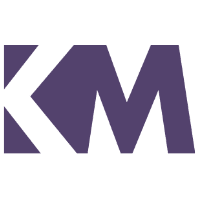Introduction – Demystifying the Digital Maze
In the world of modern business, digital marketing is no longer a luxury—it’s the lifeblood of visibility and growth. But let’s face it, the language of digital marketing can sound like code to anyone not actively working in the space. From CTRs to CPC, bounce rates to funnels, there’s a swarm of terms and KPIs that can overwhelm even the most enthusiastic business owner.
This guide is crafted with Kenyan brands, businesses, and marketers in mind. At KWETU Marketing Agency, we understand how important it is to break down these concepts into simple, usable knowledge that can empower you to make data-driven decisions. Whether you’re an entrepreneur just getting started or a marketing executive looking to sharpen your edge, this blog post will serve as your practical, jargon-free glossary and performance toolkit.
With our years of experience supporting local and international brands, we’ll not only define these commonly used terms and KPIs but explain how each plays into your overall marketing success.
Key Digital Marketing Terms and What They Mean
- Digital Marketing
A broad term that encompasses all online efforts a business makes to connect with current and prospective customers. This includes everything from social media marketing and email campaigns to search engine optimization and paid advertising. - Search Engine Optimization (SEO)
The practice of improving your website so it ranks higher in search engine results. It involves keyword research, content creation, on-page optimization, and technical improvements. - Pay-Per-Click Advertising (PPC)
A form of online advertising where you pay each time someone clicks on your ad. Google Ads is one of the most popular PPC platforms.
Content Marketing
Creating and distributing valuable content (such as blogs, videos, infographics) to attract and retain a target audience—and ultimately drive profitable customer action. - Social Media Marketing
Using platforms like Facebook, Instagram, LinkedIn, X (Twitter), and TikTok to engage with your audience, build your brand, and promote products or services. - Email Marketing
A method of sending emails to prospects and customers to inform, engage, or promote products and services. - Influencer Marketing
Collaborating with influencers—people with established credibility and followers in a niche—to promote your products or services. - Conversion Rate Optimization (CRO)
The process of increasing the percentage of website visitors who take a desired action (like filling out a form or making a purchase). - Call-to-Action (CTA)
A prompt that encourages users to take a specific action, such as “Buy Now,” “Sign Up,” or “Learn More.” - Landing Page
A standalone web page created specifically for a marketing or advertising campaign. It’s where a visitor “lands” after clicking a CTA. - Bounce Rate
The percentage of visitors who land on your site and leave without interacting further. A high bounce rate often signals that your landing page or content needs improvement. - Customer Journey
The complete experience a customer has with your brand—from initial awareness to post-purchase behavior. - Remarketing
Targeting users who have previously interacted with your brand, reminding them of your product or service and encouraging them to return. - Funnel
A model representing the stages a customer goes through – Awareness, Interest, Consideration, Conversion, and Loyalty. - Organic Traffic
Visitors who land on your site through unpaid search results. - Paid Traffic
Visitors driven to your site via paid advertising, such as Google Ads or social media promotions.
Key Performance Indicators (KPIs) Every Marketer Should Track
1 – Click-Through Rate (CTR)
This measures how many people clicked on your ad or link divided by how many people saw it. It’s essential for understanding how compelling your messaging is.
2 – Conversion Rate
The percentage of users who take a desired action. It’s one of the most critical indicators of campaign effectiveness.
3 – Cost Per Click (CPC)
How much you’re paying on average for each click on your ads. Lower CPC means higher efficiency.
4 – Customer Acquisition Cost (CAC)
This calculates how much it costs your business to acquire a new customer. Lower CAC means better ROI.
5 – Return on Ad Spend (ROAS)
Measures how much revenue is generated for every shilling spent on advertising.
6 – Engagement Rate
This metric measures likes, comments, shares, and other forms of interaction with your content. It helps gauge content performance.
7 – Impressions
How many times your content or ad is displayed, regardless of whether it was clicked or not.
8 – Reach
The total number of unique users who saw your content.
9 – Website Traffic Sources
Understanding whether visitors are coming from search engines, social media, referrals, or direct access is vital to tweak your strategy.
10 – Time on Page
A measure of how long visitors stay on your web pages. Longer time generally suggests better content engagement.
Why Understanding These Metrics Matters
If you’re flying blind with your digital strategy, you’re losing opportunities. KPIs and core digital terms aren’t just jargon—they’re signals that help you refine, adapt, and maximize your efforts.
At KWETU, part of our 360-degree approach is to help our clients not only run campaigns but understand what each metric means and how to act on it. From SEO audits and content creation to paid ads and analytics, we bring TTL (Through The Line) strategies that bridge digital and traditional marketing to deliver results.
Explore Our Services
- Search Engine Optimization (SEO)
- Social Media Marketing
- Google Ads and PPC Campaigns
- Content Marketing
- Influencer Marketing
- Website Design and Development
FAQs
1 – Why should I care about digital marketing KPIs?
Because they help you measure what’s working and what needs improvement, saving both time and money.
2 – What’s the difference between reach and impressions?
Reach refers to how many unique people saw your content, while impressions refer to how many times it was displayed.
3 – Is a high bounce rate always bad?
Not necessarily, but it often indicates that visitors aren’t finding what they need.
4 – What’s a good conversion rate for Kenyan businesses?
This varies by industry, but 2–5 percent is generally acceptable for online campaigns.
5 – How can I improve my CTR?
Use strong CTAs, engaging headlines, and relevant imagery.
6 – Why is ROAS important?
It helps you understand whether your advertising budget is generating profit.
7 – Should I focus on SEO or paid ads?
Ideally both, depending on your goals. SEO offers long-term growth – ads provide quick wins.
Conclusion
Digital marketing is a dynamic, fast-paced world—and understanding its core terms and KPIs is the first step to mastering it. Whether you’re launching your first campaign or scaling an established brand, having a clear grasp of what each metric means allows you to make smarter decisions, optimize your budget, and ultimately drive better results. At KWETU Marketing Agency, we simplify the complex by offering a full 360-degree marketing approach that blends both digital and traditional strategies under one roof. From awareness to conversion, every campaign we run is rooted in performance data, insight, and impact. Ready to unlock your brand’s potential – Let the numbers guide you—and let KWETU show you the way.







 Stay ahead in the digital world! Don’t just read—put the insights from The KWETU Blog into action today and watch your brand grow.
Stay ahead in the digital world! Don’t just read—put the insights from The KWETU Blog into action today and watch your brand grow. 
